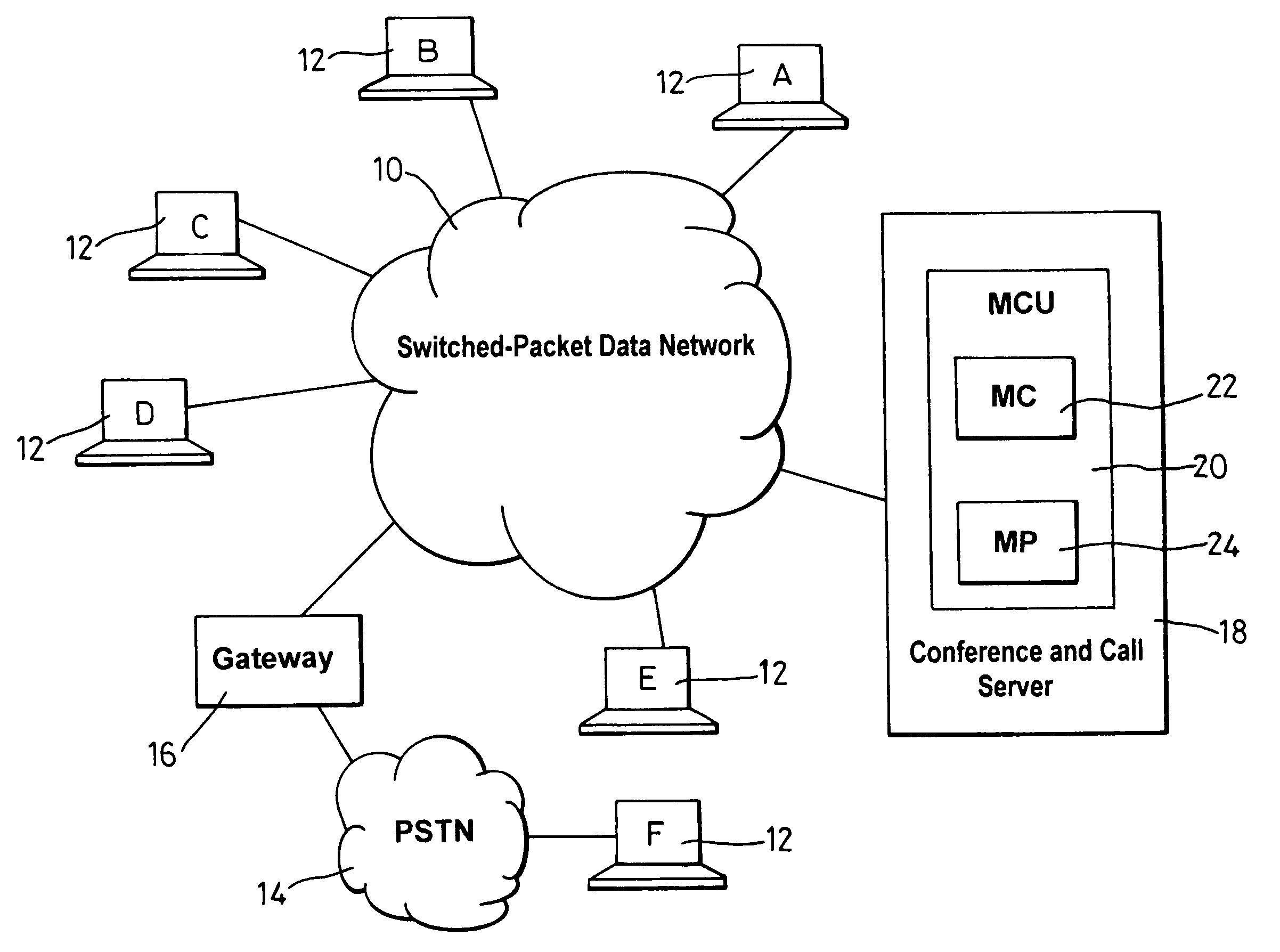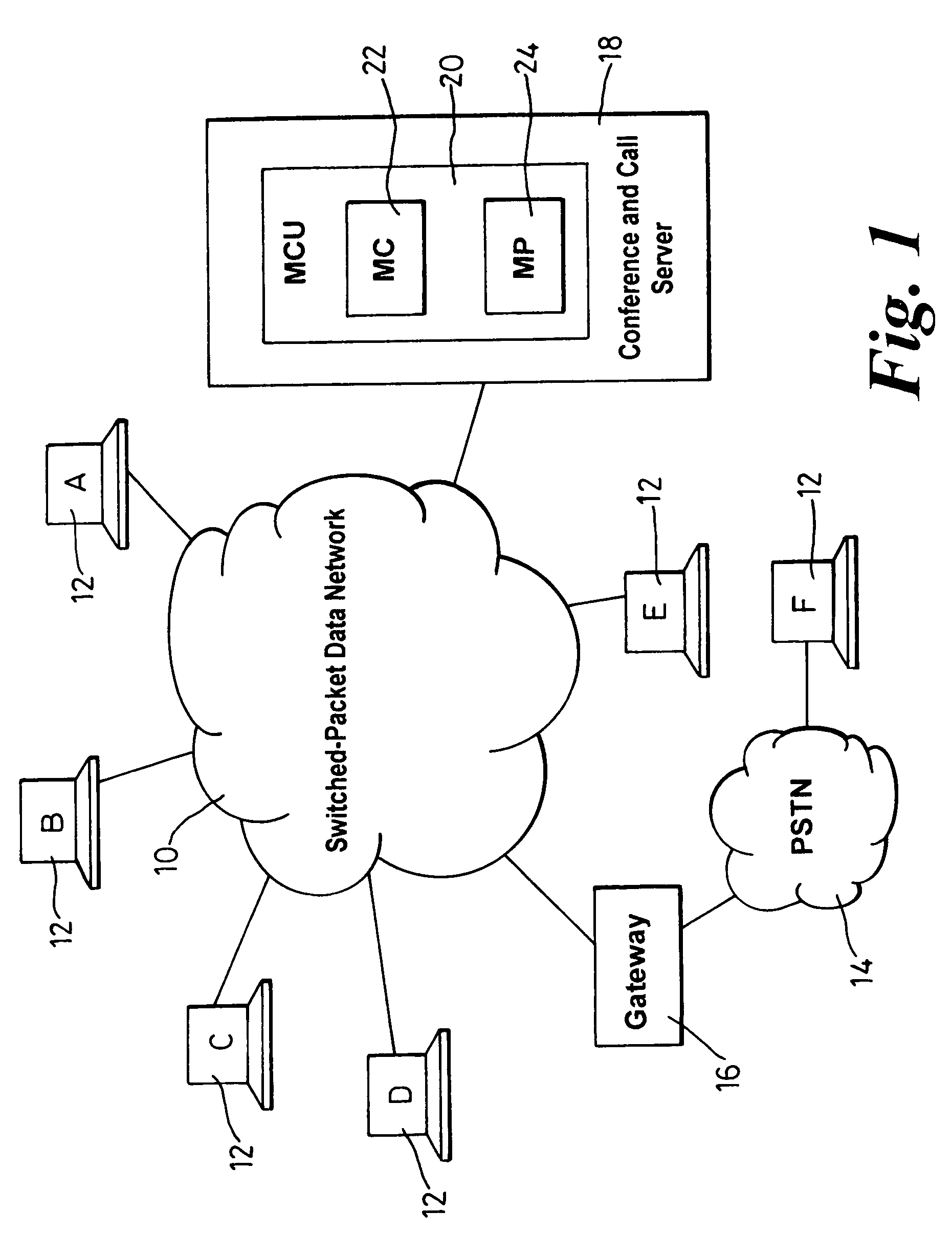Methods of controlling video signals in a video conference
a video conference and video signal technology, applied in the field of video conference, can solve the problems of wasting valuable mp resources, affecting the use of participants, and reducing so as to reduce the number of packets, and reduce the effect of network traffi
- Summary
- Abstract
- Description
- Claims
- Application Information
AI Technical Summary
Benefits of technology
Problems solved by technology
Method used
Image
Examples
Embodiment Construction
[0071]FIG. 1 shows a typical multimedia conferencing architecture typically used in conducting multimedia conferences over a packet-based data network 10 such as the Internet or a Local Area Network (LAN).
[0072]A number of multimedia terminals or endpoints 12A–12F are connected to the network 10. Endpoints 12A–12E are endpoints supporting IP signalling such as H.323 video conferencing. Terminal 12F on the other hand is connected to an analog PSTN 14. Because the PSTN does not carry data packets, a gateway 16 acts as the interface between the PSTN 14 and network 10 (gateway 16 is a H.323 entity). Therefore, the network 10 sees the gateway 16 as an endpoint and references to endpoint 12F should include PSTN 14 and gateway 16.
[0073]A combined call and conferencing server 18 connected to the network 10 acts as an integrated MCU 20 having both MC 22 and MP 24 functionality. Thus, server 18 organises the conference set up, assigns the signalling and media streams to and from the endpoints...
PUM
 Login to View More
Login to View More Abstract
Description
Claims
Application Information
 Login to View More
Login to View More - R&D
- Intellectual Property
- Life Sciences
- Materials
- Tech Scout
- Unparalleled Data Quality
- Higher Quality Content
- 60% Fewer Hallucinations
Browse by: Latest US Patents, China's latest patents, Technical Efficacy Thesaurus, Application Domain, Technology Topic, Popular Technical Reports.
© 2025 PatSnap. All rights reserved.Legal|Privacy policy|Modern Slavery Act Transparency Statement|Sitemap|About US| Contact US: help@patsnap.com



